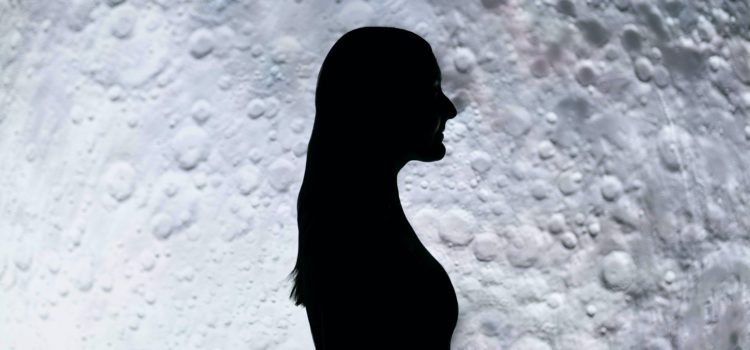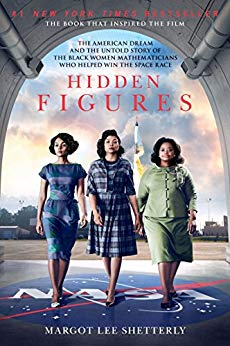

This article is an excerpt from the Shortform summary of "Hidden Figures" by Margot Lee Shetterly. Shortform has the world's best summaries of books you should be reading.
Like this article? Sign up for a free trial here .
Who were NASA’s Hidden Figures? Why were they considered “hidden” and what contributions did they make?
NASA’s Hidden Figures are brought to light in the book Hidden Figures. The book focuses on three outstanding women—though of course, they’re not the only ones—as the unsung heroes of space travel. Working behind the scenes as mathematicians and engineers, NASA’s Hidden Figures are part of what made space travel possible.
NASA’s Hidden Figures
Hidden Figures: The Story of the African-American Women Who Helped Win the Space Race tells the story of a group of African-American women who, over a period of over 25 years, made major contributions to the US space program during its golden age. Overcoming racist and sexist discrimination, these women established themselves as brilliant mathematicians and engineers and helped lead the United States to victory in some of the pivotal moments of the Cold War-era space race—including John Glenn’s 1962 orbit of the Earth and the 1969 Apollo 11 moon landing.
The scene of their success was the Langley Memorial Aeronautical Laboratory in the Hampton Roads region of Virginia. It was here, in the heartland of American segregation, that a group of extraordinary women, including Dorothy Vaughan, Mary Jackson, and Katherine Johnson, helped their country break through the color barrier and leap into the great unknown.
Opportunities During World War Two
During World War Two, the gradual dismantling of the Jim Crow system of racial segregation began, as the demands of the war economy brought African-Americans and women into jobs and industries from which they had previously been excluded. This was especially true of the aeronautics and defense industry, which was crucial to the American war effort.
Facilities like Langley began to hire qualified women in large numbers to work as mathematicians and number-crunchers. Aeronautics was an intensely quantitative field: designing and testing combat planes produced a deluge of numerical data that needed to be processed and analyzed. And that meant hiring an army of number-crunchers (“computers” as they were known at the time).
Under pressure from African-American civil rights leaders, the Roosevelt Administration took steps to desegregate the industry and open up defense jobs to black female applicants as well. This enabled the first generation of black female professionals to get in the door at Langley. The opportunity for a black person to work as a computer in an aeronautical laboratory (and not as a janitor or cafeteria worker) was something altogether new and extraordinary. In spring 1943, Dorothy Vaughan, a schoolteacher from Virginia, filled out her application. In the fall, she received her answer: she was hired to work as a Grade P-1 Mathematician at Langley for the duration of the war. It was a position that would last over 30 years.
Segregation
Despite the opportunity, new arrivals to Langley like Dorothy still had to face the prejudice of living and working in a segregated city of the American South at the height of the Jim Crow era. Black people had to use separate bathrooms, separate drinking fountains, separate entrances on buses, send their children to separate schools, and live in separate neighborhoods—or face severe repercussions. Indeed, segregation was powerfully entrenched in the nation’s historical experience and was an all-encompassing feature of life in Virginia.
The prejudice even followed NASA’s Hidden Figures into the laboratory at Langley. A separate area of the facility, known as West Area Computing, was reserved for the new black female computers. Langley was generally a place where colleagues worked closely with one another. Because of the color of their skin, however, the West Area Computers were largely excluded from this collegial atmosphere. This was symbolized most hurtfully by the sign on the table where they sat at the back of the cafeteria that read, “COLORED COMPUTERS.” In an act of defiance, the women of West Computing began tearing the sign down each day they saw it, a first shot across the bow for equality and dignity.
Facing this climate of discrimination, the first generation of West Computers established their own culturally vibrant and cohesive communities all throughout Hampton Roads. Such communities enabled mobile young black families who’d moved to Virginia to keep their morale high and served to welcome and acclimate new waves of black migrants to the region.
Cold War
After the Allied victory in the war, Hampton Roads became a focal point of the US defense industry during the Cold War with the Soviet Union. This meant that most of the West Computers who had initially come to Langley on temporary assignment ended up receiving permanent offers of employment, as Dorothy Vaughan did in 1946.
The Cold War also marked a turning point in the struggle for black civil rights, contributing to the eventual breakdown of Jim Crow. As the United States sought international allies in its fight against worldwide Soviet Communism, American policymakers began to realize that segregation at home had become a significant liability, one that made America’s self-proclaimed leadership of “the free world” look hypocritical and handed a significant propaganda coup to the Soviet Union. The federal government began putting more resources toward desegregation and slowly started to side with the civil rights protesters over the die-hard segregationists. NASA’s Hidden Figures saw a chance for opportunity, and seized it.
Space Race
On October 5, 1957, the Soviet Union successfully launched the Sputnik satellite into orbit, inaugurating the space race and sparking a major panic among both American policymakers and the general public. All across the US, people with shortwave radios tuned in to hear the tiny satellite’s telltale “beep beep” and organized observation parties to watch Sputnik as it traveled through space. Sputnik also brought the absurdity of segregation to light. If the Soviet satellite launch represented a true national crisis, then why were black Americans being denied the opportunity to fully serve their country? The US was leaving untapped the intellectual resources of a large part of its population, in service of a ridiculous and morally indefensible commitment to racial apartheid.
All of this created great pressure on NACA to design and test satellites that would be capable of making it to space. The agency was selected as the home for all of America’s space research and operations and given a new name: the National Aeronautics and Space Administration (NASA). NASA’s Hidden Figures would prove an essential part of this task.
Into Orbit
The team tasked with launching a man into orbit included one of NASA’s Hidden Figures, Katherine Johnson. The engineers with whom Katherine worked were tasked with mapping the exact trajectory of the manned spacecraft, from the second it lifted off the launchpad to the instant it splashed down in the Atlantic Ocean. Katherine had to process the numbers generated by the proposed trajectories, over and over, re-calculating the figures every time any slight detail in the flightpath was changed. There was zero room for error, as everything needed to be calibrated perfectly in order to launch the craft and return the astronaut safely. Katherine was blunt with her bosses, telling them, “Tell me where you want the man to land, and I’ll tell you where to send him up.”
Through the mission preparation, astronauts like John Glenn forged close relationships with human computers like Katherine Johnson. To them, these number-crunching women were the equivalent of test pilots, ensuring the soundness and reliability of their craft before they stepped into it. As Glenn always said, “Get the girl to check the numbers.” Glenn knew that NASA’s Hidden Figures were a necessary part of the team.
On February 20, at 9:47 Eastern Standard Time, the Friendship 7 rocket carrying John Glenn shot into orbit. After nearly four hours in flight, he returned to the bounds of Earth, with a near-perfect landing—calculated with precision by Katherine Johnson. When the navy scooped Glenn out of the waters while a jubilant nation looked on, few watching on television knew that a black female mathematician from West Virginia had mapped the journey of America’s rendezvous with destiny.
Making History
Pioneering black female engineers and mathematicians like Dorothy Vaughan, Mary Jackson, and Katherine Johnson left an indelible mark on NASA, the struggle for African-American civil rights, and the United States itself. NASA’s Hidden Figures made their mark on history, even if they weren’t celebrated astronauts.
When, on July 20, 1969, the men of the Apollo 11 mission finally walked on the surface of the Moon, it was the fulfillment of the hopes and dreams of a nation, as well as decades of research, advocacy, and struggle on the part of NASA’s black scientists and engineers.
The story of the women of West Computing is one of hope and triumph over the harshest adversity. It is also one of empowerment—these women exercised real agency and control over the course of their lives. They were protagonists who acted upon America and shaped its destiny, actors in the great drama of the nation’s history.
Without NASA’s Hidden Figures, American history may have looked very different. Thanks to the contributions of outstanding women like Katherine Johnson, Mary Jackson, and Dorothy Vaughan, each considered one of the most brilliant minds at NASA, space travel became a reality.

———End of Preview———
Like what you just read? Read the rest of the world's best summary of Margot Lee Shetterly's "Hidden Figures" at Shortform .
Here's what you'll find in our full Hidden Figures summary :
- How brave black women were instrumental to the American space race
- How they confronted racism and sexism to forge a better future
- Their enduring legacy in American history






